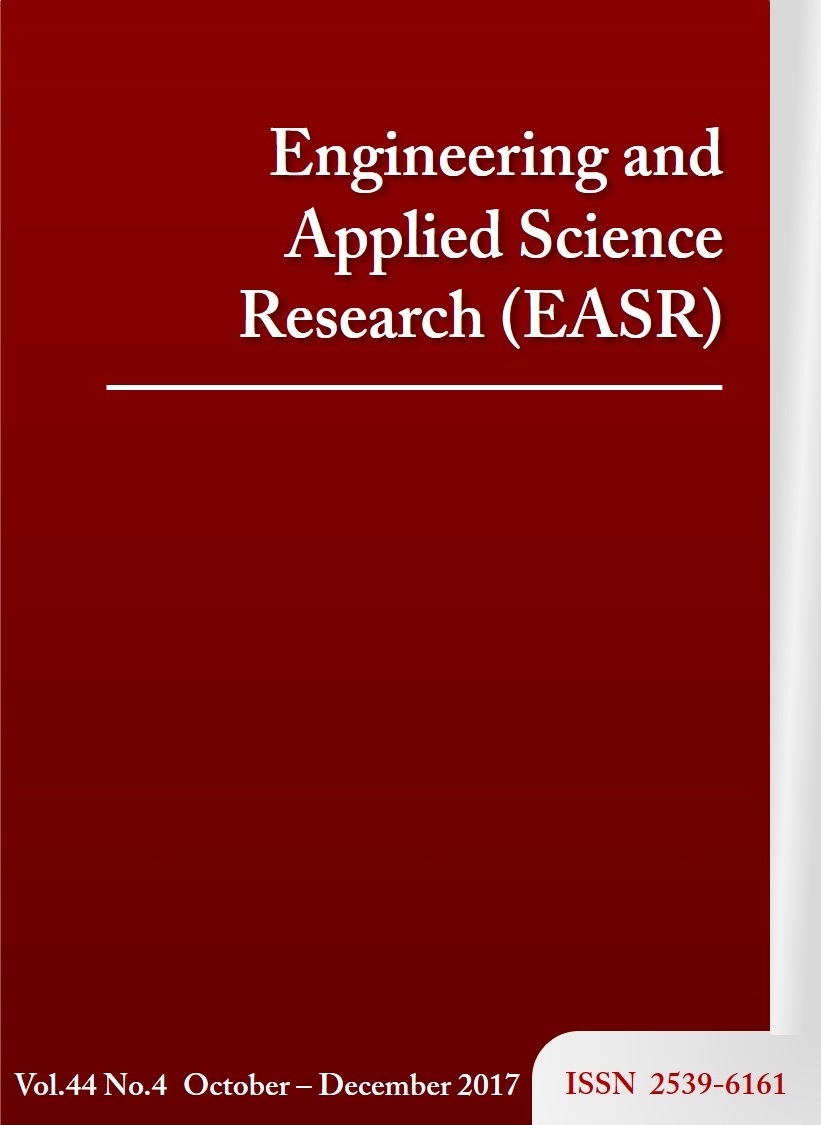A surrogate model for optimal maintenance workforce cost determination in a process industry
Main Article Content
Abstract
In manufacturing systems, stiff competition in the international markets coupled with the global economic crisis has exerted immense pressure to search for new maintenance approaches. This study focuses on determining the optimal maintenance time and workforce size, as well as a low overall life-cycle cost. Current literature has completely ignored the influence of these measures and the significance of prediction has been downplayed. Consequently, the necessity to develop an approach based on scientific foundations is affirmed. Keeping in view the status of the literature concerning this issue, a surrogate model (an evolutionary algorithm technique and fuzzy inference system (FIS)) for maintenance workforce cost prediction is presented. The key influencing parameters include production volume, routine maintenance time, workforce size and spare parts costs. The surrogate model was tested using process industry data. The result (root mean square error) obtained from the surrogate model was better than those of an artificial neural network (ANN) and FIS. The implication of these results is that the surrogate model could serve as a basis for determining maintenance workforce costs during decision-making processes. The novelty of this study is that it uses a differential evolution algorithm to improve the performance of FIS when dealing with maintenance workforce cost prediction.
Article Details
This work is licensed under a Creative Commons Attribution-NonCommercial-NoDerivatives 4.0 International License.
References
References
Parida, A. and Kumar, U. 2009. Maintenance productivity and performance measurement, In: Handbook of Maintenance Management and Engineering, Ben-Daya, M., Duffuaa, S.O. Knezevic, J. and Ait-Kadi, D. (Eds.), pp. 17-41.
Raouf A, 1994, Improving capital productivity through maintenance, International Journal of Operations and Production Management, Vol. 14, No. 7, pp. 44-52.
Saranga H. 2002, Relevant condition-parameter strategy for an effective condition-based maintenance, Journal of Quality in Maintenance Engineering, Vol. 8, No. 1, pp. 92-105.
Liu J. and Yu D. 2004. Evaluation of plant maintenance based on data envelopment analysis, Journal of Quality in Maintenance Engineering, Vol. 10, No. 3, pp. 203-209.
Holmgren H. 2005, Maintenance-related losses at the Swedish nail, Journal of Quality in Maintenance Engineering, Vol. 11, No. 1, pp. 5-18.
Campbell C.P. Workforce requirements: the basis for relevant occupational training, Journal of European Industrial Training, Vol. 21, No. 8, pp. 279-297.
Jackson P.R. 2004. Employee commitment to quality – Its conceptualization and measurement, International Journal of Quality and Reliability Management, Vol. 21, No. 7, pp. 714-730.
Mansour, M.A.A-F. (2011). Solving the periodic maintenance scheduling problem via genetic algorithm to balance workforce levels and maintenance cost. American Journal of Engineering and Applied Sciences, Vol. 4, No. 2, 223-234.
Ighravwe, D.E. and Oke, S.A. (2014). A non-zero integer nonlinear programming model for maintenance workforce sizing. International Journal of Production Economics, vol. 150, 204-214.
Alfares, H.K., Lilly M.T. and Emovon, I. (2007). Maintenance staff scheduling at Afam power station. IEMS, Vol. 6, No. 1, pp. 22-27.
Ighravwe D.E., Oke S.A., Adebiyi K.A. (2016). A reliability-based maintenance technician’s workloads optimisation model with stochastic consideration, International Journal of Industrial Engineering, Vol. 12, pp. 171-183.
Hegazy, O., Soliman, O.S. and Toony, A.A. (2014). Neuro-fuzzy system optimised based quantum differential evolutionary for stock market forecasting. International Journal of Emerging Trends and Technology in Computer Science, Vol. 3, No. 4, pp. 106-110.
Ross, T.J. (2004). Fuzzy Logic with Engineering Applications. England: John Wiley and Sons Ltd.
Hasani H., Tabatabaei S.A. and Amiri G. 2012. Grey relational analysis to determine the optimum process parameters for open-end spinning yarns. Journal of Engineered Fibers and Fabrics. Vol. 7, No. 2, pp. 81-86.
Price, K., Storn, R. and Lampinen, A. (2005). Differential Evolution a Practical Approach to Global Optimisation, Springer Natural Computing Series.
Engelbrecht, A.P. (2007). Computational Intelligence: An Introduction. 2ed. John Wiley & Sons ltd, USA.
Kaastra, I. and Boyd, M. (2006). Designing a neural network for forecasting financial and economic time series. Neurocomputing, Vol. 10, pp. 215-236.
Kamruzzaman, J., Begg, R.K. and Sarker, R.A. 2006. Artificial Neural Networks in Finance and Manufacturing, Idea group publishing, London.
Ighravwe, D.E. and Oke, S.A. (2015). A application of artificial neural network and fuzzy inference system for machining process with respect to material removal rate and surface roughness. The Kenya Journal of Mechanical Engineering, Vol. 8 No. 1, pp. 9-22.


